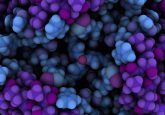Researchers develop biochip sensor capable of detecting glucose levels in saliva

A team of scientists from Brown University (RI, USA) have recently developed a new biochip sensor able to selectively measure glucose concentrations in complex solutions, such as saliva.
The news represents an important step towards a device that provides diabetic patients with a non-invasive method to test blood glucose concentrations and effectively manage their disease.
“We have demonstrated the sensitivity needed to measure glucose concentrations typical in saliva, which are typically 100-times lower than in blood,” commented Domenico Pacifici, an assistant professor of engineering at the university and lead author of the research.
“Now we are able to do this with extremely high specificity, which means that we can differentiate glucose from the background components of saliva.”
In addition to using plasmonic interferometry to detect the chemical signature of glucose, the group used dye chemistry to detect levels in artificial saliva and create an accurate marker. Namely, two enzymes were added to microfluidic channels on the chip that react with glucose in a specific manner.
The first, glucose oxidase, reacts with glucose to form a molecule of hydrogen peroxide. This then reacts with the second enzyme, horseradish peroxide, to generate a molecule of resorufin, which absorbs red light and colors the solution.
The researchers found that resorufin molecules could be accurately detected in real time with great specificity, with ten-times greater sensitivity over using interferometers alone.
“Saliva is approximately 99 percent water, but it’s the 1 percent that’s not water that presents problems. There are enzymes, salts and other components that may affect the response of the sensor,” explained Pacifici. “With this paper we solved the problem of specificity of our sensing scheme…a molecule of glucose generates one molecule of resorufin, so we can count the number of resorufin molecules…and infer the number of glucose molecules that were originally present in solution.”
The group states that their next step will be to test the method in real human saliva with the hope of eventually developing a small and self-contained device that could provide diabetics with a non-invasive way of monitoring their glucose levels.
Sources: Siu VS, Feng J, Flanigan PW, Palmore GTR, Pacifici D. A “plasmonic cuvette”: dye chemistry coupled to plasmonic interferometry for glucose sensing. Nanophotonics 3(3), 125–140 (2014); Progress on detecting glucose levels in saliva.




